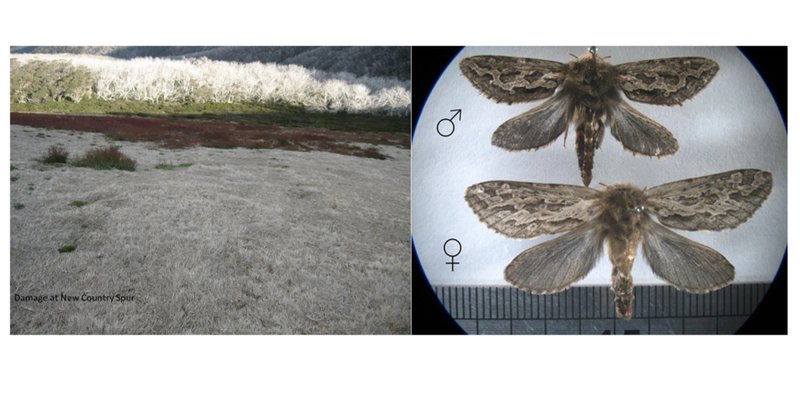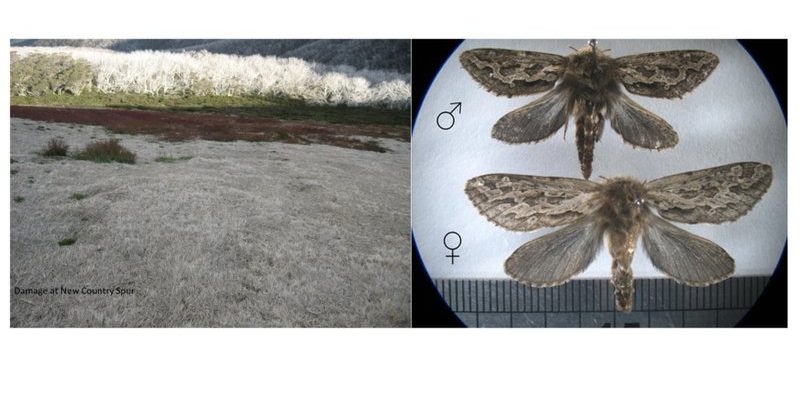
You might be wondering why a humble moth is worth our attention. Well, the Atlas moth is more than just a beautiful insect. It plays a vital role in its ecosystem, serving as a pollinator and an indicator of environmental health. But as the climate shifts, this giant of the insect world finds itself navigating treacherous waters—or, in this case, winds. Let’s dive into how climate change is shaking up the life of the Atlas moth and what it means for our planet.
Understanding the Atlas Moth
The Atlas moth, scientifically known as *Attacus atlas*, is one of the largest moth species in the world. Native to the tropical and subtropical forests of Southeast Asia, it’s known for its impressive wingspan that can reach up to 10 to 12 inches. Picture a leaf-shaped design that helps it blend into its surroundings—an incredible example of nature’s artistry.
These moths thrive in warm, humid environments where they can find plenty of food. Their caterpillars feed on leaves from various plants, while adult moths typically don’t eat at all. Instead, they rely on energy stored in their bodies from their larval stage. This unique life cycle is delicately balanced with the health of their ecosystem, which is now being challenged by climate change.
The Role of the Atlas Moth in the Ecosystem
You might not think of insects as major players in ecological systems, but the Atlas moth serves critical functions. First off, it’s a pollinator. As it flutters from flower to flower, it helps plants reproduce, which is vital for the health of their habitats.
Moreover, the Atlas moth serves as food for birds and other wildlife. Its presence is a strong indicator of ecological balance. If populations decline or shift dramatically, it can signal deeper issues within the environment. In short, the Atlas moth isn’t just hanging around for show—it’s a key player in the survival and health of its ecosystem.
Climate Change and Its Effects on Habitat
So, how exactly is climate change affecting the Atlas moth? As temperatures rise, the habitats of many species, including the Atlas moth, are changing. Tropical and subtropical forests, where these moths flourish, are facing increased temperatures and altered rainfall patterns. This change can lead to habitat loss, making it harder for the Atlas moth to find food and reproduce.
Additionally, the encroachment of human activity—such as logging, agriculture, and urbanization—combined with climate change, further fragments these habitats. The Atlas moth now finds itself battling not just the heat, but the loss of the lush forests it once called home.
Impact on Life Cycle and Behavior
The life cycle of the Atlas moth is sensitive to environmental changes. With rising temperatures, there’s a risk that the timing of their life stages might not coincide with peak food availability. If the caterpillars emerge too early or late, they may struggle to find the right leaves to munch on.
Moreover, increased temperatures could lead to faster development in some cases. While this might sound like a good thing, it can actually throw off the delicate timing of their emergence as adults. These changes can influence mating patterns and survival rates, ultimately impacting their populations.
Predators and Competition
As the climate shifts, not only do the Atlas moths face challenges from their changing environment, but they also encounter new predators and competitors. Warmer temperatures can lead to the northern migration of species that once thrived in different regions. Suddenly, the Atlas moth finds itself sharing its territory with new species that prey on it or compete for resources.
This added pressure can weaken the moth’s populations, making it harder for them to thrive. Think of it as a chess game—if a player suddenly finds new opponents that were never there before, it can completely change how they strategize their moves.
Conservation Efforts for the Atlas Moth
Given the challenges posed by climate change, conservation efforts for the Atlas moth are more important than ever. Several organizations are working to protect their habitats through reforestation and sustainable land-management practices.
Additionally, researchers are studying the Atlas moth’s adaptability. By understanding how these insects respond to changing conditions, scientists can develop strategies to help them survive in the face of climate change. Community involvement is also crucial. By raising awareness about the Atlas moth and its role in the ecosystem, we can encourage sustainable practices that benefit these magnificent creatures.
What Can You Do to Help?
You might be thinking, “What can I do to help the Atlas moth?” It’s a great question! Here are a few simple steps you can take:
- Support local conservation initiatives: Consider donating to or volunteering with organizations that focus on preserving natural habitats.
- Reduce your carbon footprint: Simple changes at home, like using energy-efficient appliances, can make a difference.
- Educate others: Share what you learn about the Atlas moth and climate change with friends and family.
Each small action we take can contribute to a larger change. Together, we can create a future where the Atlas moth continues to soar through the skies of Southeast Asia.
The Atlas moth is a stunning example of nature’s beauty and complexity, but it’s more than just a pretty face. The impact of climate change on this remarkable insect serves as a reminder of how interconnected our ecosystem is. As temperatures rise and habitats shift, the survival of creatures like the Atlas moth hangs in the balance. By understanding these challenges and taking action, we can help ensure that future generations get to marvel at this incredible moth and the vital role it plays in our world. Let’s keep the conversation going about climate change and its effects—not just on the Atlas moth, but on all living things. Together, we can make a difference!

